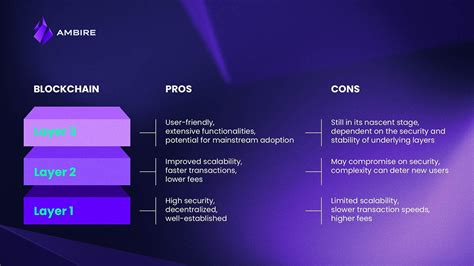“Cryptocurrency, Blockchain, and Gas Fees: The Complex World of Layer-1 Technology”
The world of cryptocurrencies has come a long way since its inception in the early 2000s. One of the fundamental building blocks that allows these digital assets to function is the underlying technology called blockchain. However, one of the biggest challenges facing cryptocurrencies is the costs associated with their transaction process – specifically, gas fees. In this article, we dive into the world of cryptocurrencies, blockchains, and gas fees and explore the complex relationships between them.
What is blockchain?
Blockchain is a decentralized, digital ledger that records all transactions made on a given network. It is like a highly secure, tamper-proof spreadsheet that enables peer-to-peer transactions without the need for intermediaries like banks. Blockchain technology is based on several layers, including:
- Layer 0

: The underlying cryptocurrency itself.
- Layer 1: Blockchain protocol that allows data to be created and stored online.
- Layer 2: Additional technologies that can improve scalability, security, and functionality.
Blockchain Technology
Blockchain technology is based on a public ledger called a blockchain, which consists of a list of transactions, each with its own unique code. Each block contains a reference to the previous block (“hash”), making it nearly impossible to change or tamper with the data. This consensus mechanism ensures that all nodes in the network agree on the state of the blockchain.
Level 1: Blockchain Protocol
The blockchain protocol is responsible for securing and validating the transactions that take place on the network. It contains various components, such as:
- Consensus algorithms: Such as Proof-of-Work (PoW) or Proof-of-Stake (PoS), which confirm transactions by solving complex mathematical problems.
- Transaction validation: Ensures that valid transactions are added to the blockchain.
- Block creation: Create new blocks and add them to the blockchain.
Level 2: Additional technologies
Several technologies can improve the scalability, security, and functionality of cryptocurrency networks. These include:
- Corda: A distributed ledger technology developed by R3 that enables seamless interaction between entities on the network.
- Polkadot: An interoperability protocol that enables the creation of parallel blockchains and facilitates data sharing.
- Ethereum’s Scalable Layer 2 Solutions: Such as Optimism, CosmWasm, and Polygon that enable faster and more efficient transactions.
Gas Cost
Now let’s talk about gas prices. Gas (gas price) is the cost associated with executing a transaction on the blockchain network. It is measured in cryptocurrency units (such as Ether) and is determined by factors such as the following:
- Transaction Complexity: More complex transactions require higher gas prices.
- Network Congestion: Congested networks lead to higher gas prices.
- Block Size Limits: Transactions that exceed the block size limit must be compressed, which increases transaction times.
As a result, cryptocurrency users often pay significant fees for their transactions. Especially for high-value transactions or complex/large data sets, these costs can be significant.
Conclusion
Cryptocurrency, blockchain, and gas fees are closely intertwined in the world of digital assets. While blockchain technology enables peer-to-peer transactions without intermediaries, the underlying consensus mechanisms determine the costs associated with those transactions – particularly gas fees. As the space evolves, developers and users must be aware of these complex factors to ensure seamless interaction between different networks.
